There are over 6,000 species of frogs in the world. With so many different types of frogs to see, it may come as no surprise that there are some stranger than others. This includes some species that grow hair, some with see-through skin, and more! Below, learn about some of the weirdest types of frogs in the world, including where they live and what makes them unique.
Ready to learn more about the weirdest types of frogs in the world? Let’s jump in.
1. Hairy Frog (Trichobatrachus robustus)
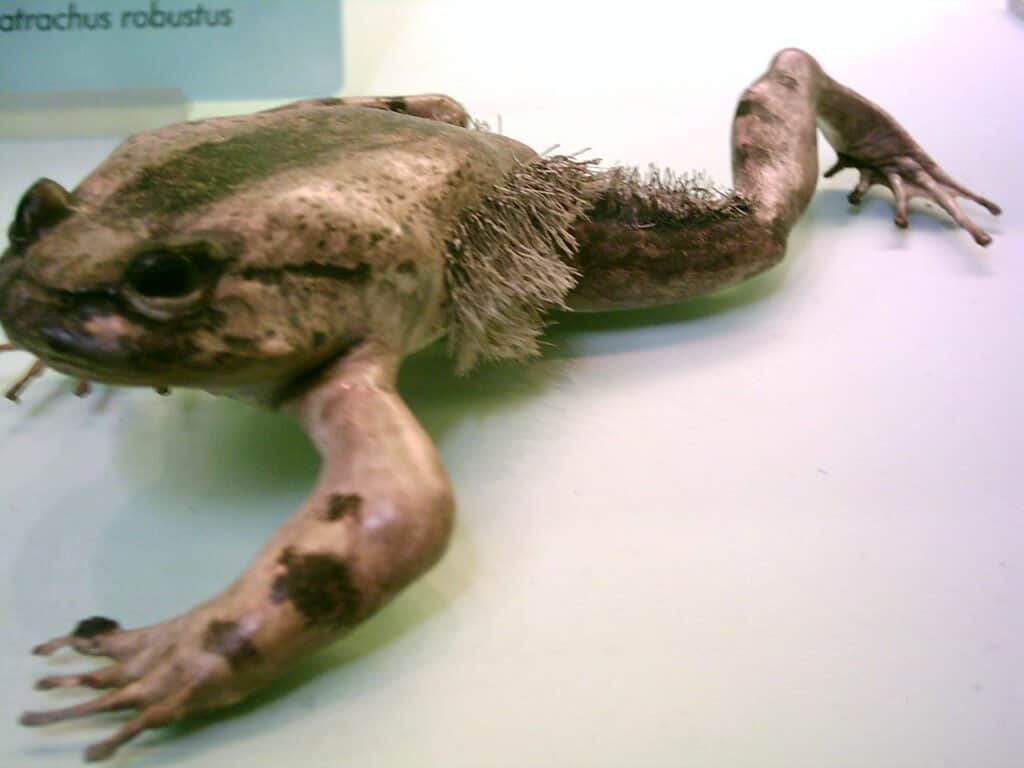
The hairy frog’s “claws” are actually made of bone.
©Gustavocarra / Creative Commons – License
The hairy frog is also known as the horror frog or Wolverine frog, native to Central Africa. These names are a reference to the hair-like features that breeding males of the species sport on their bodies and thighs.
However, their name is also derived from the fact that these frogs have retractable “claws.” It is important to note that these are not true claws. Instead, when needed, the hairy frog intentionally breaks its toe bones so that they project through the skin, creating these fake claws.
In Cameroon, individuals will hunt this frog with spears or machetes in order to roast and eat it. Local belief states that hairy frogs come from the sky, and if a couple struggling with fertility would eat it, it would provide fertility.
2. Purple Frog (Nasikabatrachus sahyadrensis)
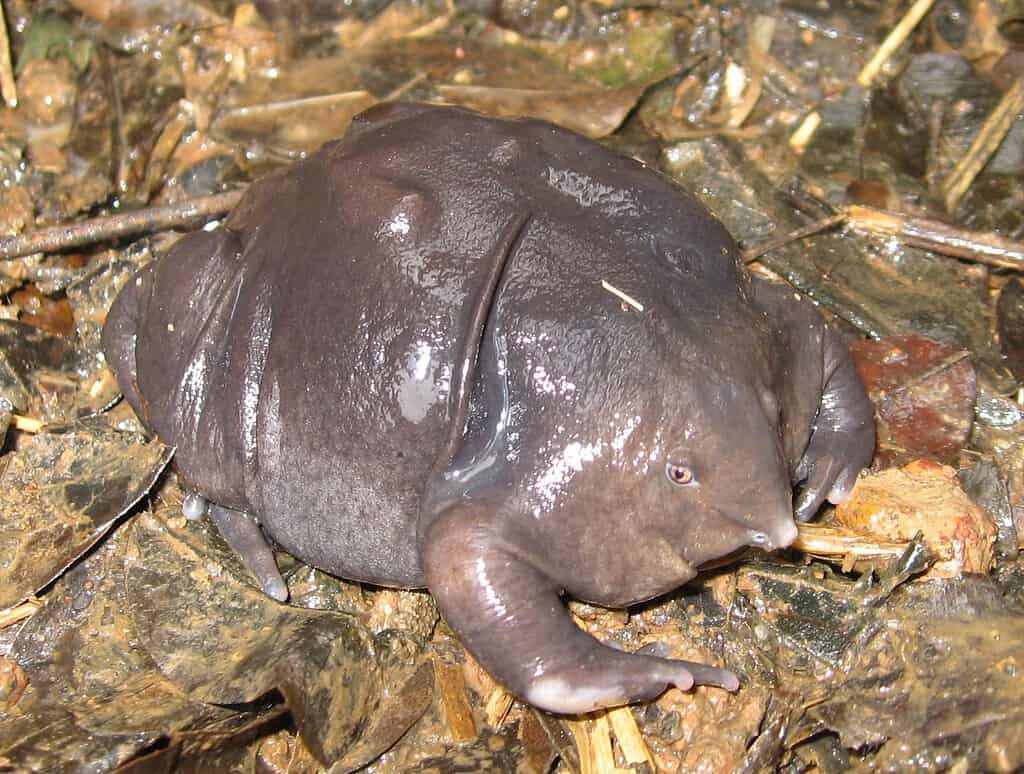
The purple frog’s snout helps them to survive underground, from burrowing to eating.
©Karthickbala at ta.wikipedia / CC BY-SA 3.0 – License
The purple frog, also known as the Indian purple frog or pignose frog, is native to the Western Ghats in India. It is an endemic species in this area, meaning it can only be found here. This frog is named both for its coloration as well as its elongated snout. This adaption allows them to consume termites easily.
This species is incredibly rare. The juvenile was first described in 1917, but adults of the species weren’t described until nearly a century later, in 2003. They spend the majority of their life underground. When they emerge, it is only during the monsoon season to mate.
3. Amazonian Horned Frog (Ceratophrys cornuta)
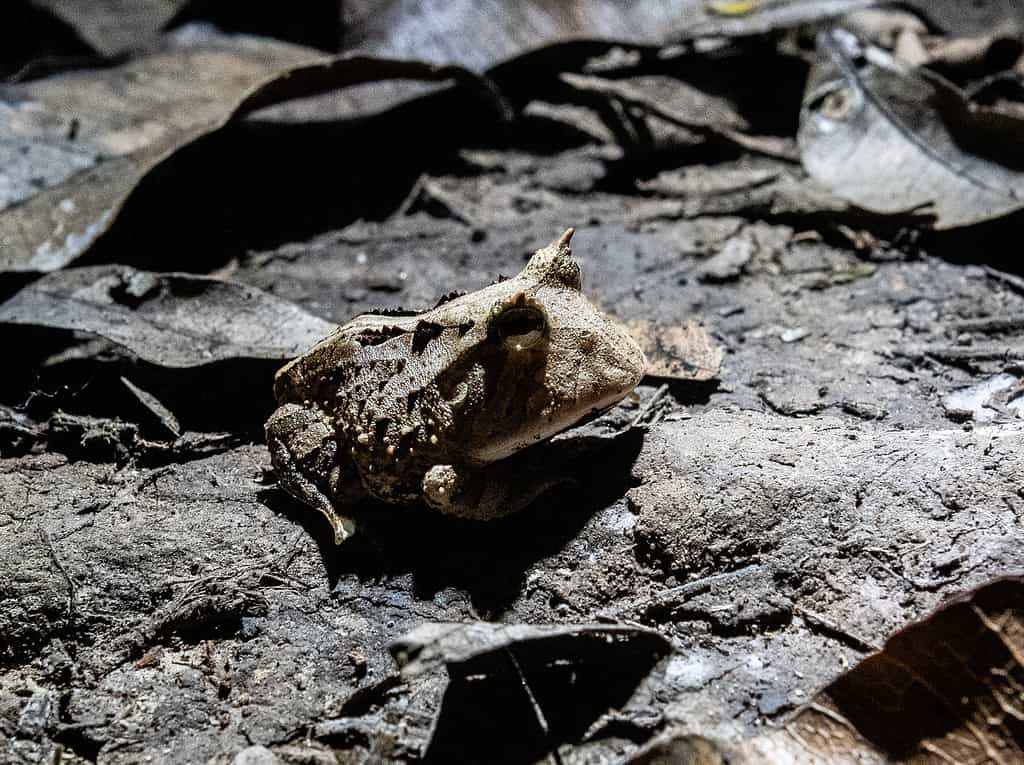
This frog species is named for the horn-like projections it sports above its eyes.
©Uriel caballero quispitupa / CC BY-SA 4.0 – License
The Amazonian horned frog is also known as the Surinam horned frog. These frogs are native to South America, specifically the northern regions of the continent. It is named, and also most well known, for the horn-like anatomy above its eyes.
During the mating season, females of this species can lay around 1000 eggs, which they wrap in aquatic plants. When the tadpoles emerge, they will fight one another. They will also fight tadpoles of other species.
Amazonian horned frogs have a largely diverse diet. This includes other frogs. However, they will also eat fish and mice. Much of this is thanks to their large size, which can reach up to around 7.9 inches in length. It is related to but not the same species as the smaller Argentine horned frog (Ceratophrys ornata).
4. Turtle Frog (Myobatrachus gouldii)
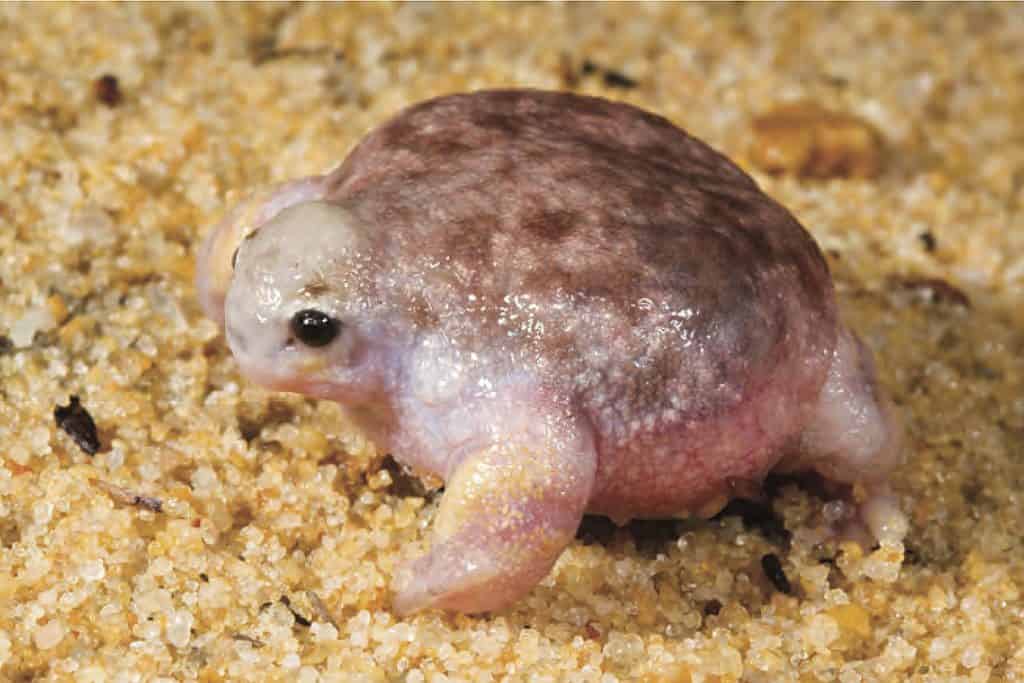
The turtle frog exclusively eats termites and often makes its home near termite hills.
©1,570 × 1,049 pixels, file size: 1.95 MB, MIME type: image/png – License
The turtle frog is the only species in the Myobatrachus genus. These frogs are found in Western Australia in a small region of Perth. They received their name from their appearance, which many compare to that of a turtle with no shell. Compared to the large Amazonian horned frog, these frogs are quite small, growing to be only around 1.8 inches long.
The closest relatives of the turtle frog are the sandhill frog and the forest toadlet. They are found within the same region as the turtle frog, and they share many physical and behavioral traits.
5. Glass Frogs (Centrolenidae)
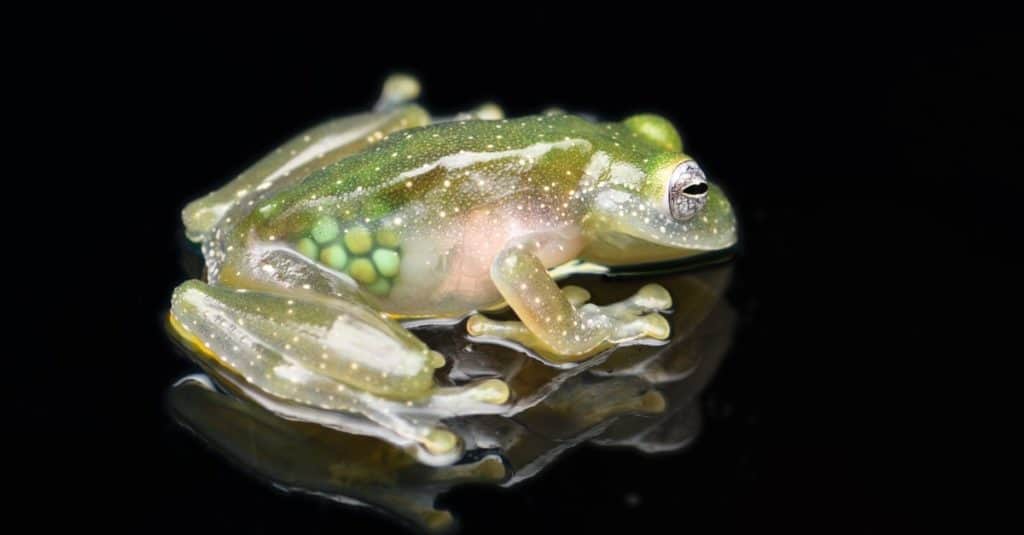
The glass frog sports transparent skin that can allow you to see things such as unlaid eggs.
©petrdd/Shutterstock.com
Glass frogs are the different species in the family Centrolenidae. These frogs can be strange to look at, thanks to their nearly transparent skin. This allows you to see much of their innards, though the exact visibility may vary based on the species. These frogs are found throughout southern North America and northern South America.
6. Shovel-Headed Tree Frog (Diaglena spatulata)

Shovel-headed tree frogs are endemic to Mexico.
©Jorge Armín Escalante Pasos / CC BY-SA 4.0 – License
The shovel-headed tree frog is also known as the Mexican shovel-headed tree frog. This is because this species is endemic to this country, being found in the region between the states of Sinaloa and Oaxaca. Two different subspecies can be best identified by their differences in coloration.
These are rather large frogs, ranging from 3.4 inches to 4.0 inches. Females of the species are larger than their male counterparts.
7. Goliath Frog (Conraua goliath)

The Goliath frog is the largest frog in the world.
©meunierd/Shutterstock.com
You may also know the Goliath frog as the giant slippery frog or the Goliath bullfrog. This frog is the largest species in the entire world. They can grow to be up to 12.6 inches in length, and they can weigh as much as 7.2 pounds. They have a fairly small habitat, located only in Cameroon and Equatorial Guinea.
The photo featured at the top of this post is © iStock.com/Maria Ogrzewalska
Thank you for reading! Have some feedback for us? Contact the AZ Animals editorial team.






